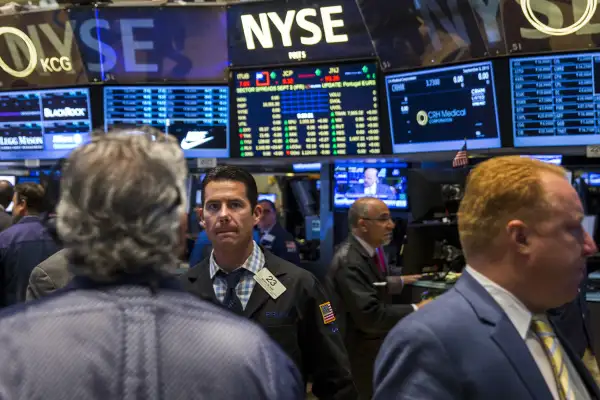What's at Stake When the Fed Votes on Interest Rates This Week
Money is not a client of any investment adviser featured on this page. The information provided on this page is for educational purposes only and is not intended as investment advice. Money does not offer advisory services.

If you were to listen to much of the current discussion surrounding the Federal Reserve, you’d come to the conclusion that the Fed plans to melt the polar ice caps on Thursday rather than possibly raise short-term interest rates by a quarter of a percentage point.
A 0.25% federal funds rate isn’t going to kill anyone, and it certainly isn’t going to take anyone by surprise.
Plus it may not even take place. Some economists have argued that the Fed should postpone raising rates given the instability of the global markets lately. Still others are arguing that on top of postponing rate hikes, the Fed should seek to further stimulate the economy.
Yet if the Fed goes ahead and raises rates at the end of its two-day meeting starting Wednesday, it would have implications for stocks and your portfolio.
Read Next: So What If the Fed Raises Interest Rates This Week?
Let’s start with the big ones:
It would mark the end of an era
The Fed started pushing down rates in September 2007, when the fed funds rate — which banks charge one another for overnight loans — stood at 5.25%. The rate effectively hit zero by December 2008, in the depths of the global financial crisis, which is where it has remained ever since.
That’s seven years of 0% interest rates. You may have a bond fund manager who has never seen short-term rates above zero.
There will be some winners...
Rising interest rates are good for some sectors, particularly banks and financial services generally. Typically, banks hike loan rates more quickly than they do deposit rates. For those who rely on savings — think retirees — rising interest rates signal the end of a seven-year yield famine.
...And losers
Interest-sensitive sectors, such as utilities, could get dinged by a prolonged rate hike. Utilities tend to have high borrowing costs, and investors who bought dividend stocks because bank CD rates were so low could migrate back to CDs.
Read Next: The Boring Secret to Getting Rich
International funds could continue to lag
All things being equal, money flows to the currency that offers the highest short-term interest rates. Central banks in Europe are continuing to push rates down; an increase in the fed funds rate would make the already strong dollar even stronger. That’s a wonderful thing if you’re going to Europe.
But if you’re investing in foreign stocks when the dollar rises, you lose money to the exchange rate. For example, the German stock market has gained 1.6% this year through September 11, but only if you’re investing in euros. In dollar terms, the German market is down 5.2%.
Naturally, no major change in monetary policy happens smoothly. And many more factors — most notably corporate earnings — could have a bigger effect on stocks over time. Already, weak S&P 500 earnings are being blamed on the strong dollar, which has made U.S. goods sold abroad more expensive to foreign buyers.
Deflation would remain a question mark
If the Fed raises rates, it would in theory send a signal to the markets that inflation is ultimately a bigger threat than deflation. Still, an uptick in inflation doesn’t seem to be in the cards, particularly with such incredibly low price levels for oil and raw materials.
A barrel of West Texas intermediate crude oil sold for $92.86 a year ago; as of Sept. 8, that same barrel sold for $45.92, a 50% decrease. Prices of steel, coal and other raw materials have plunged as well. Falling raw materials prices mean a slowdown in demand, something that’s not generally associated with inflation, either.
